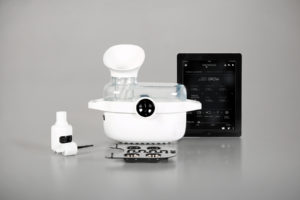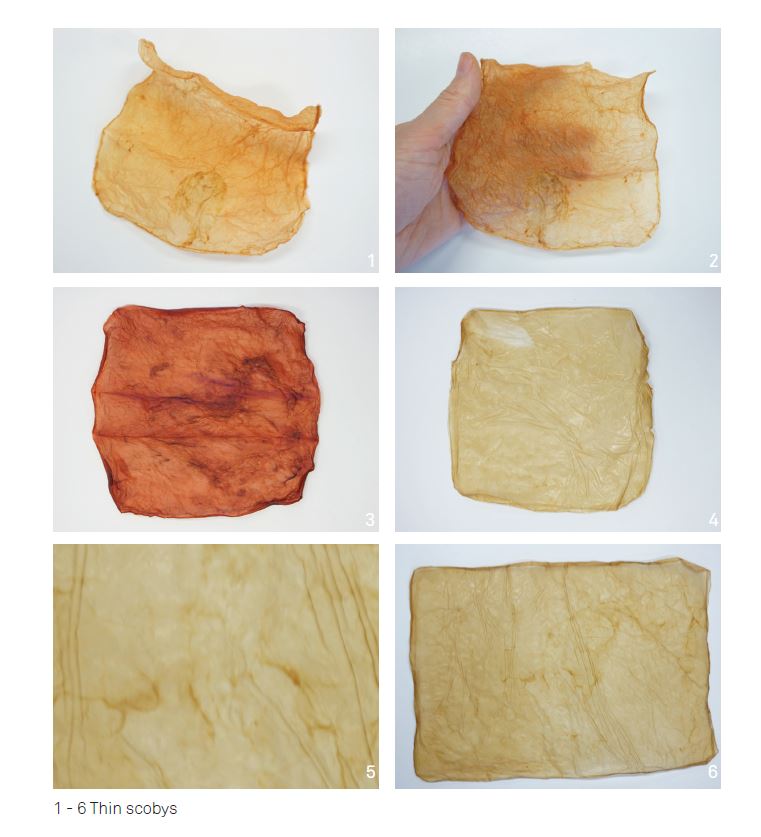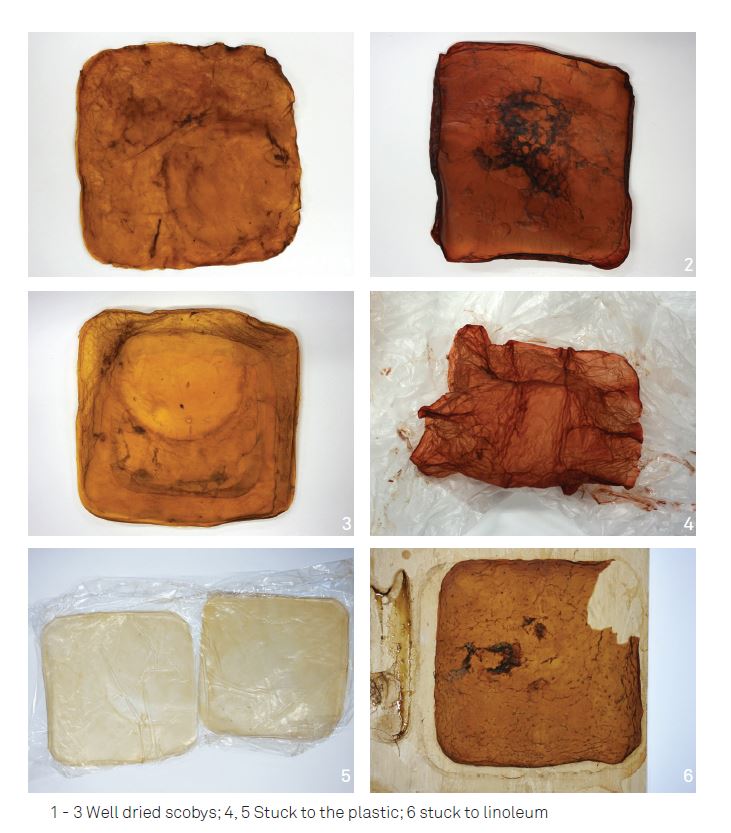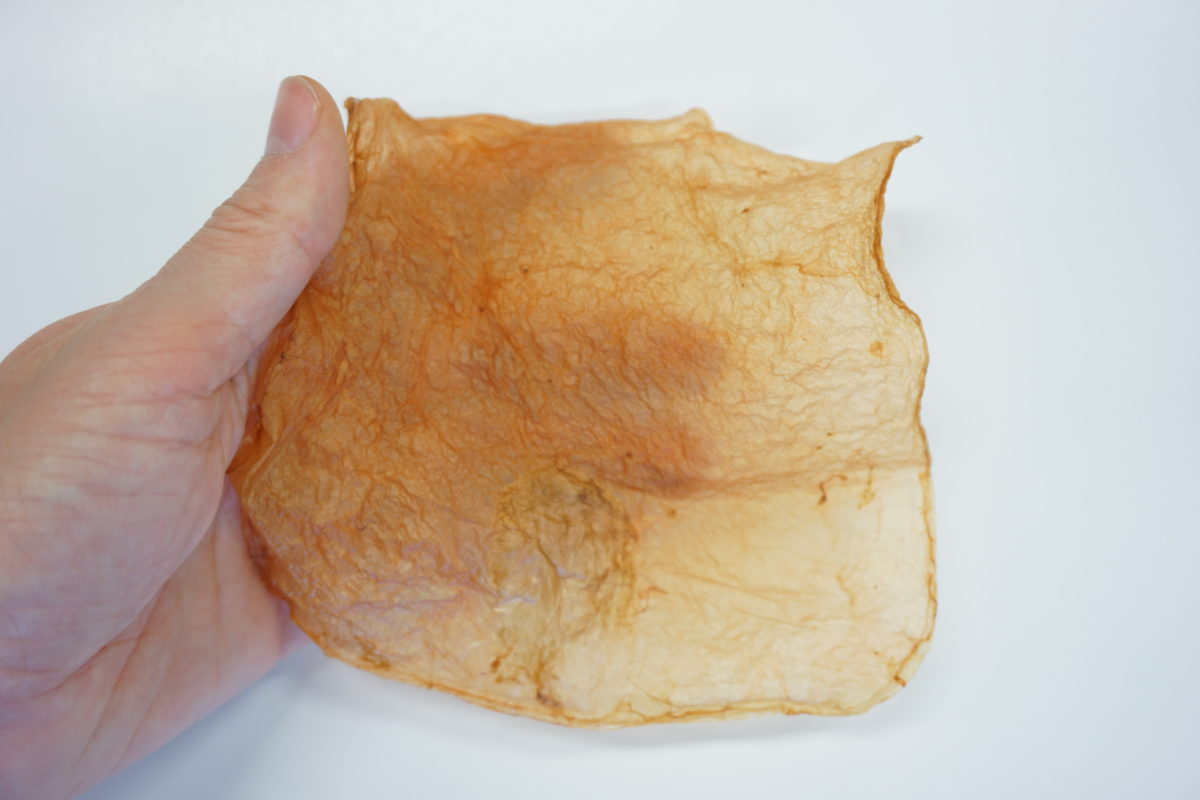Kombucha itself is a healthy fermented tea that is created by a symbiotic colony of bacteria and yeast (scoby). It is made by adding either the scoby or already fermented Kombucha Tea into a mixture of sweet black or green tea. The scoby digests the sugar and other substances in the tea and ferments it. The scoby is a gelatinous, cellulose-based biofilm, when drying it a material occurs reminiscent of fabric, leather or paper.
- Kombucha cellulose can be stitched, molded, glued, oiled, dyed, painted, waterproofed and laser-etched
- It can be both very thin and thick depending on the duration of growth
- It can be also joined by overlapping pieces of the material, which than knit themselves together
- moisture from the body and air softens the material and makes it less durable
- cold conditions make it brittle
- It dissolve in water
Uses
- Kombucha ‘fabric’ has been trialled in many fashion items, like clothing, shoes, handbags etc. London based Suzanne Lee from Biocouture made the idea public an a TedTalk.
- Queensland University of Technology and the State Library of Queensland have been using Kombucha Fabric and experimenting with anything from onions to red wine to coffee to change the nature of the end-product.
- Young-A Lee from the Iowa State University and her research team have designed vest and shoe prototypes from the cellulosic fiber grown in their lab.
- Malai, a coconut farming facility in South India, creates a leather-like material made using the bacteria naturally derived from coconut water. The bacteria is placed in a humid environment, the mixture ferments and a layer of cellulose grows, multiplying over a period of 12 to 21 days into a jelly-like substance. The longer it is left, the thicker the material becomes, eventually coming to have a leather-like quality.
Potential Uses
- ScobyTec, a German Start-Up is exploring Kombucha Fabric as a sustainable symbiotic and intelligent future material for smart products and wearable technology.
 Growduce Guillian Graves (designer) and Aakriti Jain (bioengineer) envisage an efficient, sustainable and entirely local alternative to recycling domestic organic waste, in a counter-top bio composter / 3D printer ‘biomanufacturing’ device. In a ceramic lower vessel ‘acetobacter’ bacteria living in symbiosis with yeasts digest food waste through a fermentation and metabolism process, transforming into a rubbery cellulose membrane. This grows at the compost’s surface in removable moulds to sculpt everyday objects such a healing bandage, beauty mask, gloves and other clothes, new kinds of food or even sticks to heat the house.
Growduce Guillian Graves (designer) and Aakriti Jain (bioengineer) envisage an efficient, sustainable and entirely local alternative to recycling domestic organic waste, in a counter-top bio composter / 3D printer ‘biomanufacturing’ device. In a ceramic lower vessel ‘acetobacter’ bacteria living in symbiosis with yeasts digest food waste through a fermentation and metabolism process, transforming into a rubbery cellulose membrane. This grows at the compost’s surface in removable moulds to sculpt everyday objects such a healing bandage, beauty mask, gloves and other clothes, new kinds of food or even sticks to heat the house.- RCA Graduate Jessica Gregory imagines ‘Bihome’ is “a series of objects which allow users to grow and process their own products at home from biomaterials.” In stacked bacterial cellulose growth beds sugars from food waste become nutrition for acetobacter xylinum bacteria. Cellulose forms on top of the liquid as a leather-like finished material.
Processes
- Look up how to make your own Kombucha Fabric on instructables and on ecouterre



